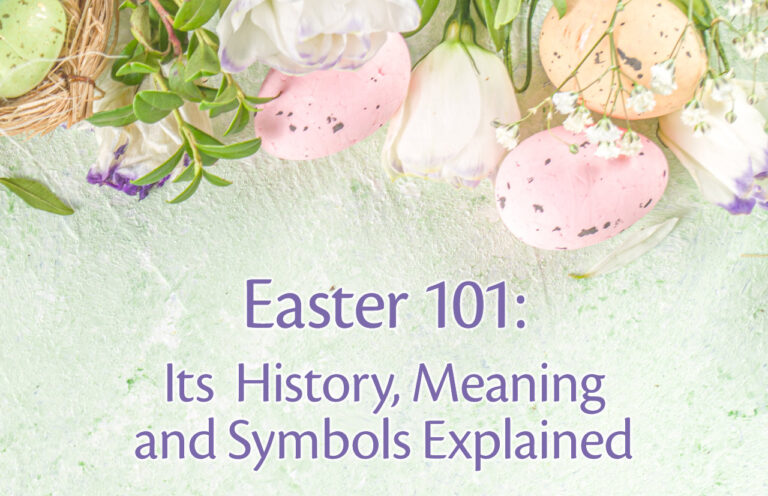Table of Contents
When Is Easter Celebrated?
In 2022, Easter will be celebrated on Sunday, April 17. Easter always falls somewhere between the dates of March 22 and April 25, but it can be a different date every year so it’s always a good idea to consult a calendar if you aren’t sure.
The date change is based on the appearance of the Paschal Full Moon (or the first full moon of spring). For this year (2022), the Paschal Full Moon can be witnessed on Saturday, April 16, which means Easter will occur on the following day.
What Is Easter?
The word Easter is derived from the word Eostre, a Germanic goddess associated with the season of spring. The holiday is primarily a Christian occasion celebrating the resurrection of Jesus from the dead. Although, the influence of the holiday has spread far beyond its religious foundation.
Why Is Easter Significant?
From a religious standpoint, the holiday of Easter is significant because it is the cornerstone of the Judeo-Christian faith – marking the occurrence of the resurrection of Christ. This moment of resurrection remembrance is part of Holy Week – the week proceeding Easter – which begins with Palm Sunday, continues through Good Friday, and culminates with Easter.
Even apart from its religious context, Easter has become significant to many because of its close association with spring, and as a time of gathering with family and friends. Many celebrate the occasion with Easter dinners and brunches with the people who are most important to them.
What Are the Origins of Easter?
While the word Easter has pagan roots, as mentioned earlier with the goddess Eostre (first documented by Bede in the 8th century), religious celebrations associated with the occasion proceeded it by centuries. According to the Encyclopedia Britannica, certain observances and liturgical expressions of the event were well established by the 4th century. These practices have evolved through the years, becoming more regimented and standardized within both Protestant and Catholic churches, and Judaism.
Easter Symbolism and Meaning
The Easter season is rich with symbolism, both Christian and otherwise. Below is a list of some of the most recognized Easter symbols and their significance.
The Cross – symbolizes the crucifixion and death of Jesus.
The Open Tomb – symbolizes the burial and resurrection of Jesus.
Rabbits – symbolize fertility and spring, which connects these adorable creatures back to the goddess Eostre, for whom they were a sort of spirit animal.
Lilies – symbolize purity and rebirth, thus connecting them to Jesus and his resurrection. They are also mentioned in the scriptures as a direct parallel to Christ.
Hot-Crossed Buns – a very popular treat, especially during the Easter season, and sometimes recognized in Good Friday traditions. Hot-crossed buns are crowned with a cross design signifying the crucifixion.
Eggs – another strong symbol of rebirth and renewal, eggs are often associated with Christ coming out from the tomb on the third day after his death.
Butterflies – symbolize resurrection, a key component of the Easter holiday.
What Are the Primary Easter Traditions?
There are many traditions associated with Easter. Most of them have roots in Christianity or Judaism and are religious by nature. However, there are non-religious Easter traditions that are still practiced as well. Like the Easter Bunny’s annual visit, for example.
Rabbits, as mentioned earlier, were known for their association with the goddess Eostre, so that’s a good starting point for how we arrived at the idea of an Easter Bunny. According to History.com, this egg-bearing legend made its way to America via German immigrants living in Pennsylvania during the 1700s. In their traditions, “Osterhase” or “Oschter Haws” was a magical hare who would lay colorful eggs during the Easter season and leave them for children who had been good. Visits from the Easter Bunny and visits to see the Easter Bunny at the shopping mall (like Santa Claus at Christmas time) have certainly become regular occurrences.
Here are a few more Easter traditions regularly practiced in the United States:
Dyeing and Decorating Eggs
Easter Baskets with Candy
Easter Parades
Special Church Services
Easter Dinner
Lamb Cakes
Easter Lilies
Easter Egg Hunts
Hollow Chocolate Bunnies
Dressing Up in Your Finest We hope our look at Easter was both informative and entertaining. As Easter grows nigh, we wanted to remind you that The Bradford Exchange offers some reverent reflections of the season. And just a hop away, we also have some incredible ways to bring all the vivid colors of springtime into your home with unique wall decor, collectible keepsakes, and more. Happy Easter to you and your loved ones.
Easter 101: Its History, Meaning and Symbols Explained by The Bradford Exchange













